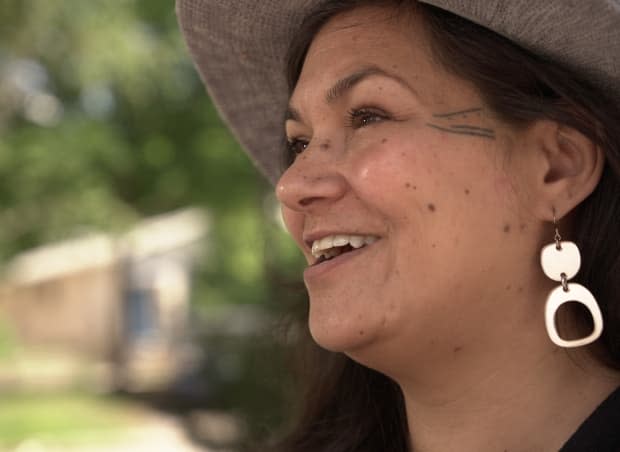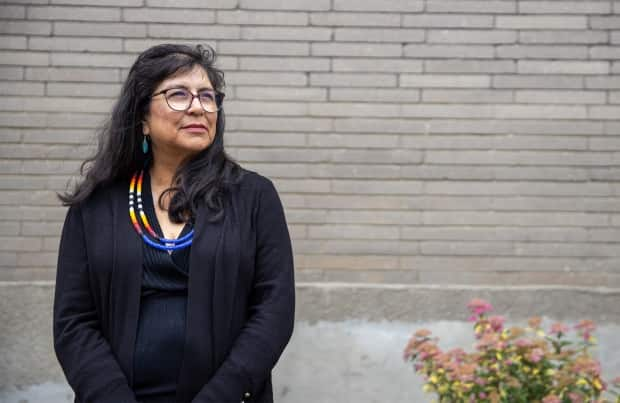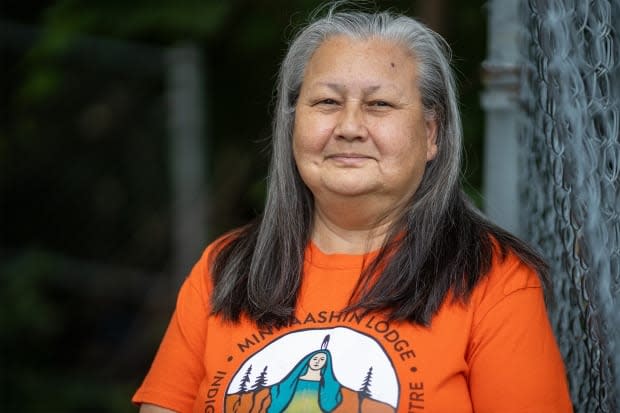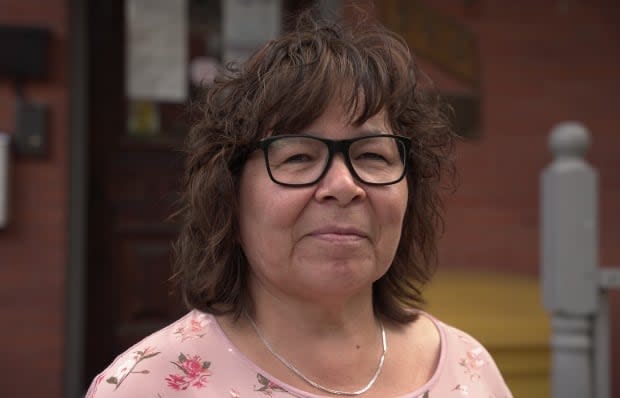Ottawa's 'Indigicity': Vanier's rise as an urban home for Indigenous people

Thanks to a strong network of Indigenous support and cultural centres, and the efforts of community workers over the years, Ottawa's Vanier neighbourhood has become an urban hub for First Nations, Métis and Inuit people.
CBC/Radio-Canada met up recently with a range of community members in the neighbourhood east of the city's downtown to capture the reasons why the area has, according to many, become a welcoming and safe urban space for Indigenous people.
Jaime Morse: 'It's a little 'Indigicity''

When she arrived in Ottawa 20 years ago, Jaime Morse says she immediately felt a sense of familiarity in Vanier, even though she was thousands of kilometres from her home in Lac La Biche, Alta.
"I liked the feeling of safety here," said Morse. "I felt supported, especially around my health."
The Michif woman soon learned she would be having twins and turned to the Wabano Centre for Indigenous Health. But beyond that support, the diversity among First Nation, Métis and Inuit people in Vanier also provided opportunities for her and her children to experience other Indigenous cultures.
"It became a place where I learned about other nations from all over across Turtle Island (North America) that I never had contact with before," she said. "I'm meeting Mi'kmaq, I'm meeting Inuit, it was a blast."
Morse has since gone on to become an accomplished visual artist, and the owner of Indigenous Walks, an educational tour company that required Morse to dig even deeper into the area's Indigenous culture.
WATCH | Welcome to Vanier, a hub for the Indigenous community in Ottawa
"We'd often come across this term called 'Vanier First Nation,' and without anybody having to explain it to me, coming from my own small community, I got it," said Morse.
"It was this term that created automatic cohesion with people from all over the place, whether you're First Nations, Métis or Inuit. It's an affectionate term that describes the community here."
With Vanier and neighbouring Overbrook now home to the Odawa Native Friendship Centre, the Minwaashin Lodge, the Inuuqatigiit Centre for Inuit Children, Youth and Families, and the Wabano Centre, Morse feels the area offers an ideal urban home for Indigenous people.
"It's a little Indigicity," she said. "You can just walk around and you know people and you can get your food and your hair done by people from other Indigenous communities. I think that's what I love seeing after having lived here in Ottawa for over 20 years, and it's looking more and feeling more like a place I belong."
Lucie Gaspe: 'I felt like I was home'

While the colloquial and informal term 'Vanier First Nation' may appeal to some, it's important to clarify the federal government does not recognize a nation in Vanier, and the area also has a significant population of residents who identify as Métis and Inuit.
While the origins of the term are uncertain, it might have been born by Vanier resident Lucie Gaspe, who moved there from the Mohawk community of Kanesatake west of Montreal.
"I was living alone for the first time and I was a little bit scared ... a little bit nervous. So my second day here I tried to go to the corner store, which is only two blocks away, and I ran into three different Indigenous people, and I knew two of them. So all of a sudden I felt very comfortable. It felt like my community. I felt like I was home on the rez, as we say. So I said 'I'm going to start calling this 'Vanier First Nation.'"
Gaspe laughs when she recalls how she later shared the term on a whim during a community meeting when everyone was asked to introduce themselves.
"When they finally got to me, I said, 'I'm going to try and liven up this room a bit,' and I said, 'Lucie Gaspe, chief of Vanier First Nation.' And everybody just laughed and the name stuck."
Verna McGregor: 'It becomes a hub'

From her previous work as a real estate agent and financial analyst in Ottawa during the 1990s, Verna McGregor witnessed first hand the influx of Indigenous people to Vanier. This was prompted mostly, she says, by the relatively low cost of living, especially housing.
Today, as an elder with the Algonquin community of Kitigan Zibi Anishinabeg near Maniwaki, Que., and as the employment counsellor at Minwaashin Lodge, McGregor credits the area's Indigenous agencies with helping the community prosper.
"We have a big population [of Indigenous people] and we're becoming more visible, so it becomes a hub," said McGregor. "And with that hub you see the culture coming and seeping back in."
McGregor adds the area's Indigenous community also has a lot to offer non-Indigenous people in the city.
"There's more of an understanding and awareness of our history," she said. "As the city's growing we're also grappling with not just gentrification, but also the issue of climate change, and I notice that there's been a real seeking of knowledge [from Indigenous people] in that area, too."
As for the future of Vanier, McGregor hopes Indigenous people will make up a larger portion of the area's landlords and entrepreneurs.
"Where I'd like to see more growth, and the potential now is maybe in the business side of things, too, where we have more Indigenous people as business owners as well."
Irene Compton: 'Everything we need is in our culture'

In 1993, Irene Compton co-founded Minwaashin Lodge to assist Indigenous women and children who are survivors of domestic and other forms of violence.
"We had to establish our own organizations so that we could adequately serve our own people," said Compton, who still works at the lodge as the manager of culture programs.
"It's important that we have culturally appropriate services for the people we serve. Otherwise there is a big disconnect ... because everything we need is in our culture."
The Saulteaux First Nation woman from the Keeseekoose band in Saskatchewan points to a collaborative spirit in Vanier and Overbrook that has evolved over the years.
"We all work together on different issues to make sure that our organizations are thriving," said Compton. "We're not duplicating services and we're taking the lead in getting important initiatives put in place for Indigenous people in Ottawa."
Delores Peltier-Corkey: 'We are being seen'

Delores Peltier-Corkey fondly recalls her decision 24 years ago to move to Ottawa.
"I was living in the Arctic and I would have to pass through Ottawa, and being here I just felt like, 'Wow, I love this city,'" said Peltier-Corkey, a member of the Wiikwemkoong First Nation on Manitoulin Island in Ontario.
However, her initial feeling of excitement was quickly tempered by feelings of doubt and insecurity, as well as discrimination from a prospective landlord, she added.
"When you're coming from a small town, a small community, a small reserve, you're in a culture shock," she said. "You don't know what to expect when you come to the city. It sounds so nice when you see it on TV ... but when you first get here, it's scary. It's a very scary situation."
Peltier-Corkey now helps others navigate housing difficulties as a tenant relations officer with Gignul, an Ottawa-based not-for-profit housing corporation serving Indigenous clients.
"When I arrived here the housing needs were really difficult," said Peltier-Corkey.
"We were not visible in the city of Ottawa as Indigenous people. So that's where I see the big change now, compared to what it was 20 years ago. Our communities are becoming resilient, they're becoming vibrant, they're becoming stronger. We are being seen. I do hope that when my grandson becomes older that he will not have to face that same challenge that I did growing up."

 Yahoo Finance
Yahoo Finance 